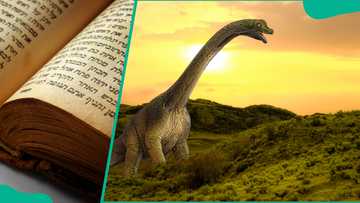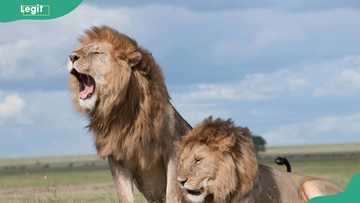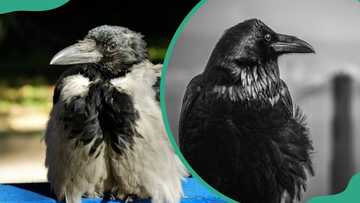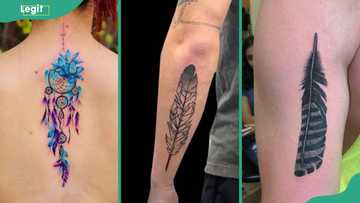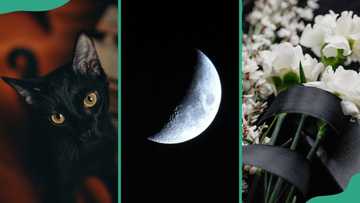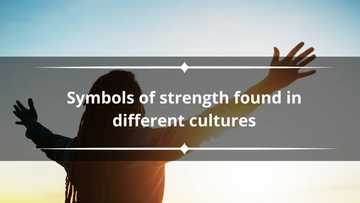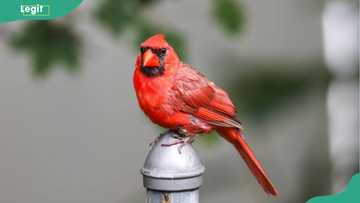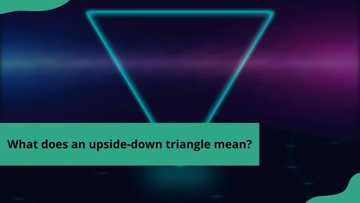Dragon symbolism: What do these creatures represent?
Dragons are mythical creatures that have appeared in legends and stories for centuries. From ancient epics to modern fantasies, the winged serpent is admired in awe in the imaginations of humans. The beast is also one of the most potent animal spirit guides. In different cultures and religions, dragon symbolism and meaning vary. Dr. Adrienne Mayor, an historian of ancient science and a classical symbolism expert, shares valuable insights about the significance of these mythical creatures in various cultures and contexts.
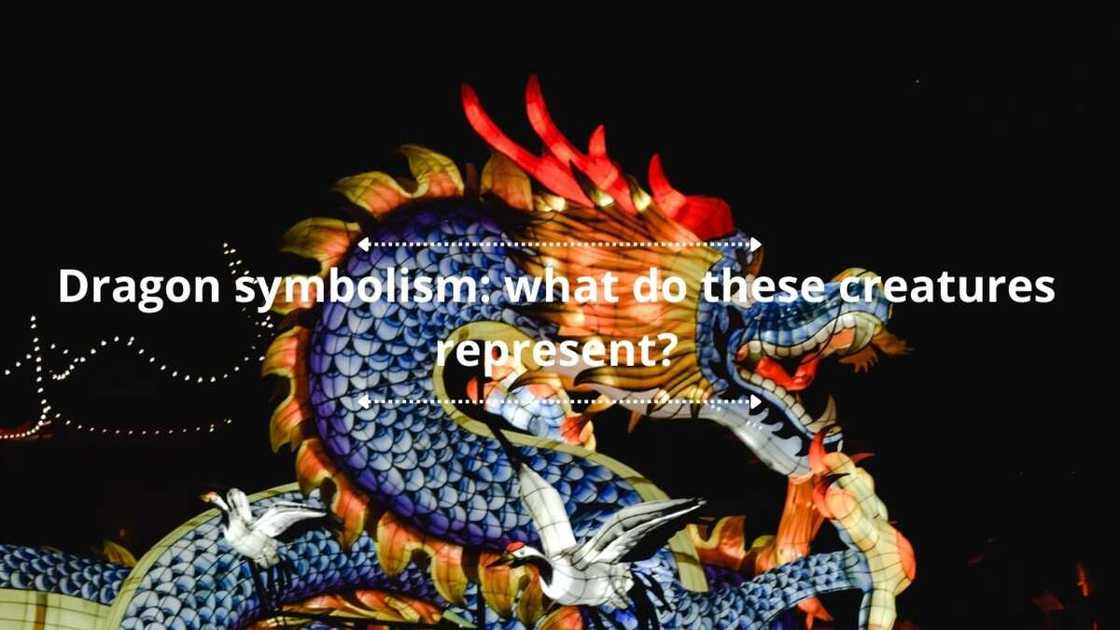
Source: UGC
TABLE OF CONTENTS
- Common traits and characteristics of dragons
- Dragon symbolism in Eastern and Western cultures
- Why are dragons depicted as evil creatures in Western mythology?
- Famous myths and legends of dragons
- Dragon symbolism
- What is the spiritual meaning of a dragon?
- What does a dragon symbolise in the Bible?
- What does Christianity say about dragons?
- What is the meaning of seeing a dragon?
- What is the meaning of dreaming with a dragon?
- What are the main types of dragon spirit guides?
- What is the spiritual meaning of a dragon tattoo?
The dragon spirit guide is the oldest and most imposing animal spirit. Though the winged serpents are not real, people encounter them in dreams, art, literature and shows. The creature has been depicted positively and negatively in different cultures. Learn more about this mythical beast and what it symbolises.
Common traits and characteristics of dragons
Dr. Adrienne Mayor, a folklorist and historian of ancient science, explained in an interview with Legit.ng that, despite no one having seen a live dragon, these creatures are universally recognisable as they are found in cultures all around the world. Dr. Mayor said:
Dragons are always composite creatures, combining the features of many different mammals, birds, reptiles, fish, and even insects. The typical dragon has a long, undulating, serpent-like body covered in scales like a snake or reptile, sometimes with a crest on the neck or along the back.
The head has large, staring eyes and jaws with sharp teeth like those of a crocodile or shark. They have four legs with three, four, or five toes with big claws.
European dragons have bat-like wings but do not fly, and they breathe fire. In contrast, Chinese dragons have no wings, even though they live in the sky, and antlers on their heads. Some believe that dragons lay eggs that take centuries to hatch; others claim that dragons have sparkling gems in their skulls.
Dragon symbolism in Eastern and Western cultures
Dr. Mayor also mentioned how dragon symbolism differs between the Eastern and Western cultures. They include:
Eastern dragon symbolism:
- Dragons were great celestial beings dwelling in clouds, associated with water forms such as rivers, seas, lakes, canals, floods, and rainstorms. They were seen as controllers of rainfall and flooding, which was a pervasive problem in China.
- In China, dragons looked terrifying and could wreak havoc, but they were generally benevolent and believed to bring good fortune if respected.
- Emperors adopted dragons as symbols of power, and people prayed to dragons for rain and to mitigate floods.
- Also in China, fossils of dinosaurs and extinct creatures were called “dragon bones” and used in medicine. In the ancient Chinese text called 'I Ching' ,discovering dragon bones in fields was considered a sign of very good fortune.
Western dragon symbolism:
- Dragons were symbols of danger and evil that needed to be eradicated by heroes or tamed by virtuous women.
- As guardians of gold and treasure, European dragons represent greed and the challenges of achieving goals.
- Some scholars propose that dragons of the West represent ancient human fears of predators of land, sea, and sky that preyed on early humans like lions, tigers, and wolves; crocodiles and sharks; and huge raptor birds.
- The different features of dragons are inspired by these predators’ characteristics, such as sharp teeth, staring eyes, vicious claws, talons, and wings.
Why are dragons depicted as evil creatures in Western mythology?
Dr. Mayor explains that in Mediaeval European folklore, dragons were fearsome guardians of gold and treasure, often residing in castles or caves. They were depicted as frightening, fire-breathing monsters that threatened villages and townspeople. She said:
In the Middle Ages, there were many stories of heroes or saints who rescued young maidens from dragons or killed dragons that devoured lifestock and generally made life dangerous.
Mediaeval artists made many illustrations of saints, especially Saint George, slaying ferocious dragons, which symbolised the triumph of good over evil and Christianity’s victory over the devil.
Dr. Mayor mentioned that the reason for dragons' evil portrayal in Europe is complex; however, one explanation might be the discovery of bizarre, immense fossil bones of long-extinct animals in European caves, leading to tales of dragons lurking in these dark, ominous places.
Another natural piece of evidence for enormous dragons across the land could have been giant footprints of dinosaurs embedded in rock, found in Germany, France, Italy, and England. These giant footprints were said to have been made by huge dragons.
Also, we know that people just love to hear exciting tales of heroes overcoming evil, and dragon stories are thrilling and entertaining. Notably, there are some mediaeval pictures of saintly women who tamed evil dragons.
I think it is interesting that ever since the Harry Potter novels became popular a few years ago, people now think of European dragons as powerful but benign creatures and helpful companions. So even dragon lore can change over time.
The classical folklore expert noted that dragons also hold significant religious and spiritual meanings. She explains:
In Europe, Christian symbolism can be seen in stories of knights slaying dragons, a feat that stood for good overcoming evil. In the Middle East, Islamic tales also tell of righteous heroes who slay evil dragons. In China, dragons were powerful beings that evoked awe and gratitude. No good would come from trying to slay a Chinese dragon.
Famous myths and legends of dragons
Dr. Mayor concluded by sharing some famous myths or legends involving dragons that highlight their symbolic significance. She mentioned:
Germanic Legend of Siegfried:
- Siegfried encounters a dragon called Fafnir, who guards a hoard of golden treasure. The dragon is so massive that the ground shakes when it walks.
- Siegfried tracks the dragon to its lair in a cave by following the dragon’s huge footprints sunk deep in the rocky ground. There, the hero (Siegfried) kills Fafnir in a difficult struggle and wins the treasure, freeing the land from the grip of the monstrous dragon.
- This famous story about Fafnir greedily hoarding treasure even has a fossil connection—the gigantic footprints of the dragon were really dinosaur tracks impressed in bedrock in Germany.
The ancient Greek myth of Jason and the Argonauts:
- Jason and the Argonauts went on a mission to retrieve the Golden Fleece, representing the gold deposits of a distant land that is guarded by a gigantic dragon.
- Medea, a sorceress or witch of Greek myth, helped Jason obtain the Golden Fleece by mixing up a magic potion to put the dragon to sleep. However, instead of killing the dragon, Jason uses Medea's clever trick to obtain the Golden Fleece.
Dr. Mayor highlights that "the idea of a dragon as the guardian of gold arose more than 2,000 years ago" in this myth.
Dragon symbolism
The mythical beast is an ancient and powerful symbol that has existed in many cultures throughout human history. The legendary beast represents different things in different cultures. Below is what it represents in various cultures:
- It symbolises power, change, and spirituality.
- In some cultures, it symbolises good luck, royalty, protection, wealth, and prosperity.
- In the Far East, the mythical creature symbolises the authority of the Emperor who controls the whole country.
- In the art of Feng Shui, the beast represents growth and development.
- These beastly creatures symbolise the ability to see things clearly and rise above obstacles in some European cultures.
- In fairy tales, fights between knights and mythical creatures represent the inner struggle of humanity to adapt to the spiritual nature.
Dragon spiritual meaning
The mythical creatures are spiritual animals or guides that have been around for millennia. The spiritual symbolism varies from culture to culture. Below are the three main representations of dragon spiritual symbolism.
- Dragon spirit animal. The spirit animal is proud, wise, patient and honourable. People whose spirit animal is the winged serpent are ambitious, intelligent and powerful with great spiritual strength. However, they are prone to the sins of pride and greed.
- Dragon totem animal. People with dragons as their totem animal are believed to be tenacious. Although this strength could be destructive, the ferocity as an energy can be beneficial. People with this spirit are advised to use it for only positive thoughts, words, and actions.
- Dragon power animal. The mythical beast power animal means you have supernatural and real magic. Their spirits have alchemical powers that hope to lead you into spiritual awakening. The power assists those who work for good but destroys those engulfed in evil.
Dragon symbolism in Christianity
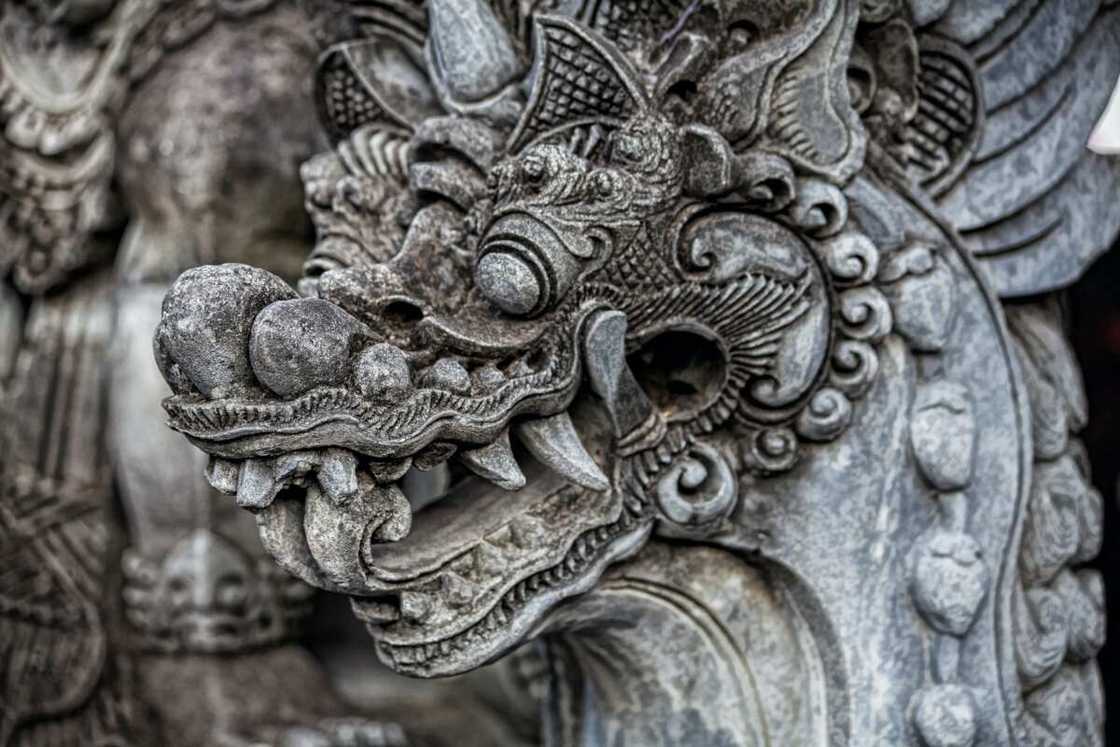
Source: UGC
The Bible has two dragons, Leviathan in the Old Testament and Satan in the New Testament, in the book of Revelation. Several texts in the Old Testament talk about a dragon called Leviathan. Leviathan symbolises the incredible power of God. According to Bible Gateway, Psalm 74:14 says:
It was you who crushed the heads of Leviathan and gave them as food to the creatures of the desert.
God used the Leviathan to remind people that no one else is like Him. The book of Revelations also discusses the winged serpent in the end times. This creature is thought of as an embodiment of Satan himself and symbolises evil. Revelations 12:1-4 says:
And there appeared a great wonder in heaven; a woman clothed with the sun, and the moon under her feet, and upon her head a crown of twelve stars: And she being with child cried, travailing in birth, and pained to be delivered. And there appeared another wonder in heaven; behold a great red dragon, with seven heads, ten horns, and seven crowns upon his heads. And his tail drew the third part of heaven's stars, and cast them to the earth: and the dragon stood before the woman who was ready to be delivered, for to devour her child as soon as it was born.
Dragon symbolism in China
Dragons have existed in the myths of many cultures around the world. They come in a unique story told from generation to generation. Chinese art primarily represents the beautiful creatures as long, scaly, four-legged serpentine monsters.
The symbolism of the creatures in Chinese culture is impossible to explain in its entirety. Here are some of the most famous dragon myths in Chinese mythology.
The "Four Dragon Kings" are the most famous in Chinese mythology. According to Shen Yun Performing Arts, they are believed to be the rulers of water bodies in China.
According to Time of India, another Chinese myth states that the people of China trace their origins to a leader named Yandi. Yandi is said to be born via a telepathic relationship between his mother and a mighty dragon. Some Chinese people believe they are descendants of the mythical beast.

Source: UGC
According to China Fetching, a dragon named "Zhu Long" presides over Mount Zhong. His body is several miles long, and he is bright red. He has a human face with piercing eyes and is very powerful. It is said that he controls sunrise and sunset with his eyes. In summary, these are the dragon symbols in Chinese culture.
- The winged serpent is a symbol of power in the Chinese culture.
- It is a symbol of good luck.
- The mythical monsters are also associated with the weather. They are thought to control water, rain, floods, and storms., making them symbols of power and strength.
- Dragons are among the twelve animals of the Chinese zodiac. People born under this sign are believed to be wise and curious.
Western dragon symbolism
According to History UK, The Red Dragon of Wales, the winged serpent, is a powerful and essential creature among the Welsh. A red dragon is a symbol on the flag of Wales with the motto 'the red dragon leads us'. They are represented together with the Celtic gods.
In another ancient Welsh tale of Lludd and Llewelys, King Lludd must fight three plagues threatening his kingdom. One of the plagues is to fight dragons that threaten his kingdom. The Celtic mythical creature symbolises strength, courage, leadership, authority, and wisdom.
On the other hand, in other parts of Europe, winged serpents symbolise evil reptilian monsters. They are thought of as obstacles stopping heroes from achieving their dreams.
What is the spiritual meaning of a dragon?
The winged serpent is a spiritual animal in many cultures. The spirit animal acts as a spiritual guide. They symbolise wisdom, patience, loyalty, good luck, fortune, growth and great spiritual strength.
What does a dragon symbolise in the Bible?
Dragons appear in the Bible as symbols of evil, sin and destruction. In the book of Revelation, Satan is called a dragon in the New Testament. It is symbolic of Satan's real evil power. It also symbolises the power of God, who is the only one who defeats the beast.
What does Christianity say about dragons?
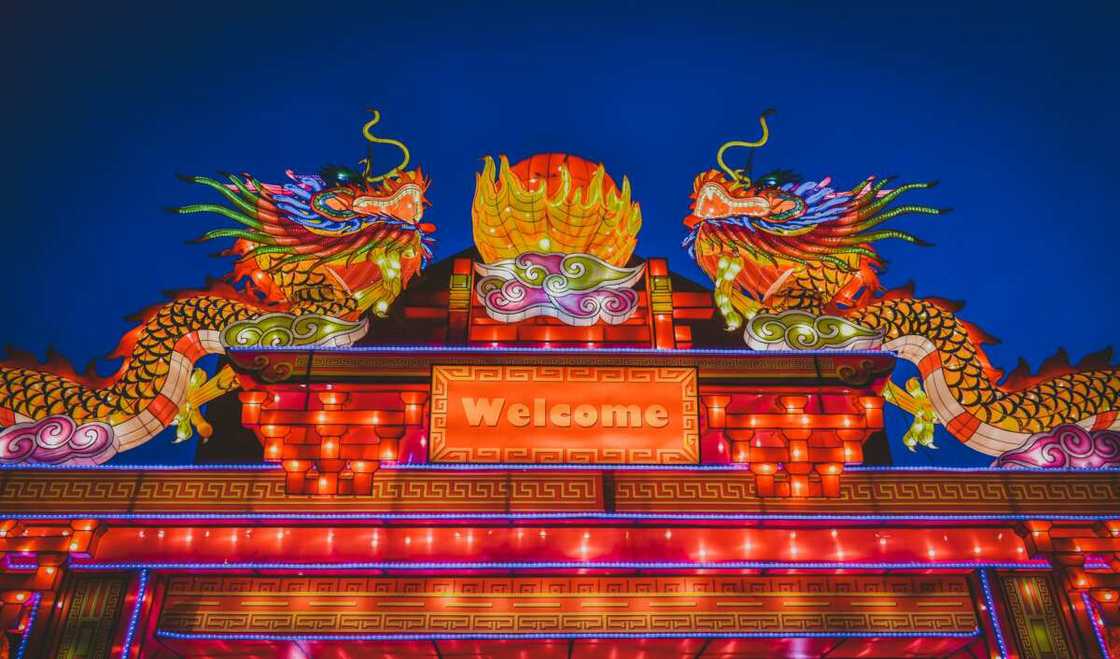
Source: UGC
Dragons are symbolic in the Christian religion. They are mighty and evil creatures whose aim is to destroy human beings but are defeated by God himself.
What is the meaning of seeing a dragon?
Since dragons are mythical creatures, seeing them in real life is impossible. However, you can encounter the beast in pictures, art, movies or dreams. Seeing this winged serpent means your inner power is about to awaken.
What is the meaning of dreaming with a dragon?
Interpreting dreams is highly subjective and varies from person to person. Below are some common interpretations of the mythical winged serpent dreams.
- If the beast was breathing fire, you are passionate about something in your life. It could be work, a project, or a relationship.
- If the creature was flying, you could pursue and achieve your dreams.
- If the creature is aggressive, something is making you feel threatened in your life. You need to face it head-on.
- If the dream is about transforming you into a creature, it means you have things in control.
What are the main types of dragon spirit guides?
There's a dragon spirit guide for all four natural elements. Each component has unique powers. Below are the types of spirit guides and what they represent.
- Fire dragons. They symbolise enthusiasm, vitality, courage and determination.
- Water dragons. If you are passionate and emotional, this could be your power animal.
- Earth dragons. These are associated with wealth, power, and potential. It represents stability and self-sufficiency.
- Air dragons. These represent clarity and understanding for those seeking knowledge and insight.
What is the spiritual meaning of a dragon tattoo?
Among the meaningful tattoos is the dragon tattoo. Its spiritual meaning varies with country and culture. It symbolises many things, including good fortune, wisdom, protection, and strength.
The dragon is a spirit animal that can represent different things for different people. Dragon symbolism runs deep in ancient cultures, representing power, wisdom, and transformation.
Legit.ng published an article about the meaning of koi fish. Koi fish is fish primarily kept for aesthetic purposes. Thanks to their vibrant colours and unique patterns, they are pleasing to the eye. What is the meaning of Koi fish in different cultures?
Koi fish are common in many Asian cultures. Besides being beautiful, they have spiritual meaning and symbolism. For example, Koi fish dates back to the 19th century. Find out more about the meaning of Koi fish and their symbolism.
Source: Legit.ng

Isaac Wangethi (Lifestyle writer) Isaac Wangethi has been a content writer at Legit since September 2021. He has gained valuable experience working on various projects, such as celebrity biographies, lifestyle, news and many more. Isaac won the Writer of the Year Award on Legit in 2023. He earned a Bsc. of Science in Information Technology in 2017 from the University of Nairobi and a Higher Diploma in Computer Software Engineering from Gretsa University in 2021. In 2023, Isaac finished the AFP course on Digital Investigation Techniques. In March 2024, he completed the Google News Initiative course. Email: Wangethin@gmail.com

Mary Ugbodaga (Lifestyle Journalist) Mary Ugbodaga is a Legit.ng journalist with 7 years of experience in journalism and media communications. She graduated from Covenant University in 2018 with a Bachelor's degree in Mass Communication/Media Studies. Mary previously worked as a journalist at TheCable, CNBC AFRICA, Voice of Nigeria, KPMG Nigeria. Email: mary.ugbodaga@corp.legit.ng.


